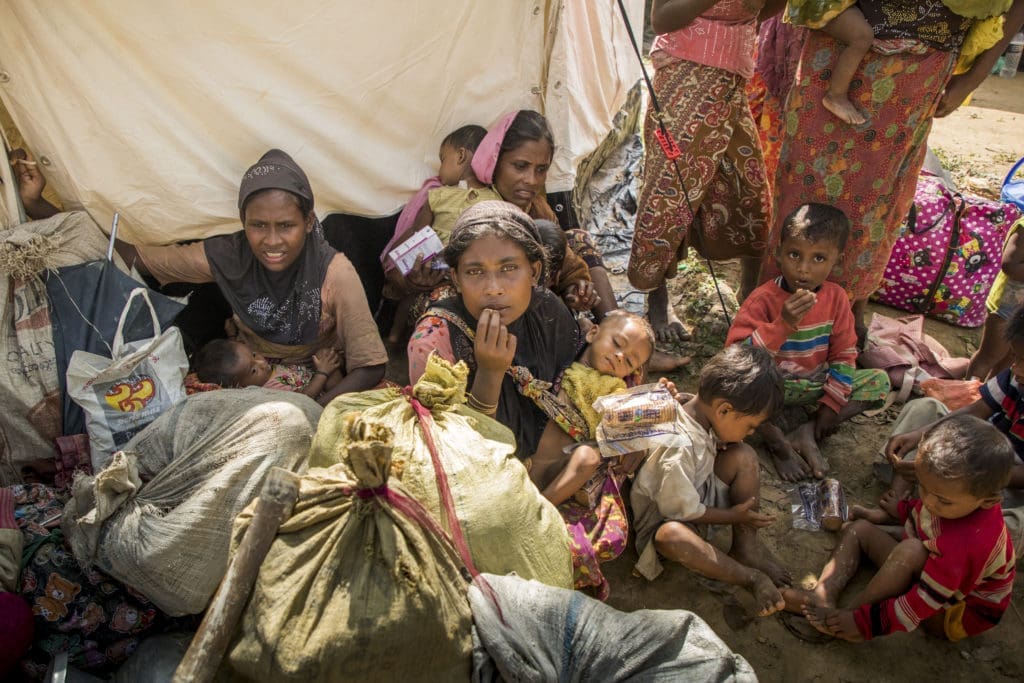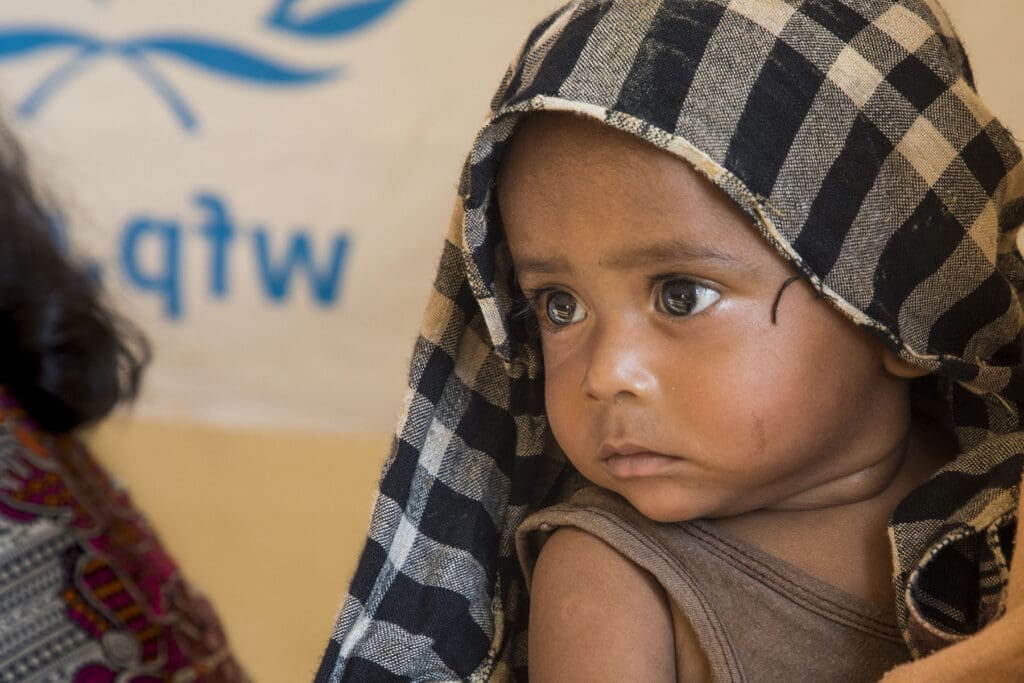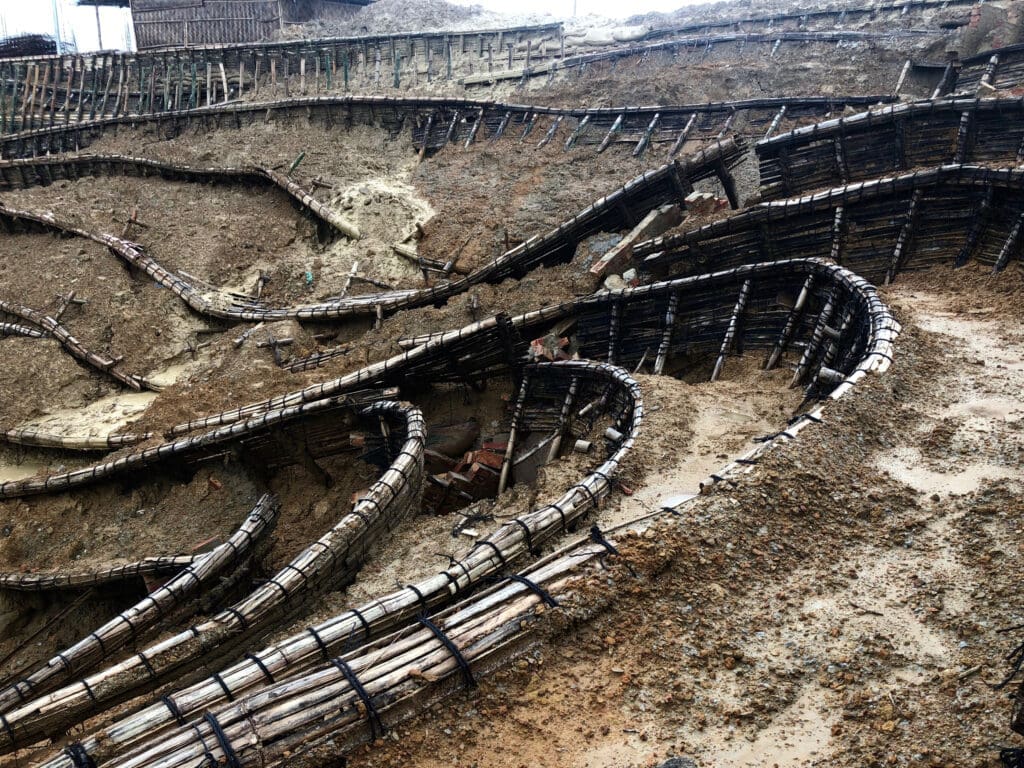
Rohingya Crisis: A Firsthand Look Into The World’s Largest Refugee Camp
December 9th marks International Day of Commemoration and Dignity of the Victims of the Crime of Genocide and of the Prevention of this Crime. In short, it’s a time to recognize the millions people who’ve been impacted by genocide.
“Where we see people facing systematic discrimination or becoming targets of violence simply because of who they are, because of their identity, we must act,” says United Nations Secretary-General António Guterres, “both to defend those at immediate risk and those who could be in jeopardy in the future.”
In that vein, we’re revisiting this story of the Rohingya: their violent displacement, their new makeshift home, and their ongoing struggle.
From the air, the Kutupalong camp in Bangladesh looks like a labyrinth built on a hillside. Tens of thousands of makeshift tents are packed together on rolling terrain. From the ground, it’s sprawling, chaotic and crowded.
And it’s earned a dubious, but fitting title – largest refugee camp in the world. With a population of nearly 1 million, it’s also the most densely populated.
The story of this displaced community began in 2017, when ethnic violence in neighboring Myanmar sparked a mass exodus of Rohingya families. In a matter of weeks, hundreds of thousands of people fled for the safety of Cox’s Bazar, a coastal town in Bangladesh.
“At the border, I remember my colleagues were saying it was a tsunami of people, waves of people crossing the borders,” an aid worker named Sunee Singh told us from her base in Cox’s Bazar.
“So we were always trying to figure out how many are coming in, which bases they were going to, which settlement has popped up over the night.”
As a policy program officer for the United Nations World Food Programme (WFP), Sunee was one of the first responders, charged with helping organize impromptu food distributions among traumatized and hungry families, many of whom had traveled for days on foot.

A child carries water back to his makeshift home in Kutupalong.
Why The Rohingya Fled Myanmar
The Rohingya, long living in Myanmar’s Rakhine state, have faced decades of discrimination and repression under successive governments. Effectively denied citizenship in the country, they are one of the largest stateless populations in the world.
Rohingya families have been fleeing for years, but in much smaller numbers. In 2017, hundreds of thousands streamed into Bangladesh to escape a military onslaught. Many have spoken of extreme violence at the hands of the army and its civilian allies, with reported atrocities including murder, rape and the burning of hundreds of villages.
United Nations investigators, the U.S. Holocaust Memorial Museum, and the U.S. House of Representatives have called the campaign a genocide, though the United States has yet to declare it so. A genocide designation might have little legal effect, but it remains a powerful label that could escalate pressure on Myanmar.
A Tidal Wave of Refugees to Cox’s Bazar
Sunee and her colleagues expected roughly 75,000 refugees to arrive in Cox’s Bazar in 2017. But in just three months, nearly 700,000 people crossed the border – ten times what they had predicted. Makeshift settlements sprang up overnight.
“We realized by the second week of the influx, it was just beyond expectations,” she recalled. She thought her colleagues were exaggerating the number of new families arriving every day – until she made her first visit to the camp.
“From the moment I stepped out of the car, there were a lot of families surrounding me because they knew I was with the U.N. World Food Programme and they were indicating they needed food.”
“It was overwhelming in the sense that you’re surrounded by these faces and you see they’ve been through a lot. In front of you there are people who don’t even have umbrellas to shelter them from the rain, who look very thin. There were these women drenched along with their small kids with them, and it was just clear they had been starving for days.”

30-year-old Rekha sits with her sister Khaleda. Both women arrived in Bangladesh with their mother and Rekha’s young child. Her husband was killed in Myanmar right in front of her.
The U.N. World Food Programme is still working to keep up with the demand for food. Every family in the Kutupalong camp – and surrounding makeshift settlements – relies on emergency humanitarian assistance to survive.
Three years on, we’re still feeding almost 900,000 refugees in Kutupalong and other nearby settlements.
WFP Helps Refugees Move From Despair to a New Normal
What Sunee remembers most about those first few days during the height of the crisis was the sound of children crying. “It was a situation of despair,” she recalled.

A young child waits at a food distribution site in the Kutupalong camp in Cox’s Bazar.
Six months later in early 2018, refugees had settled into a new normal. Children attended learning centers in the camp, where the U.N. World Food Programme was providing High-Energy Biscuits—a special fortified food packed with calories and nutrients—to encourage attendance and facilitate concentration. Women were attending what the U.N. calls “Safe Spaces,” where they could start to cope with the trauma of the violence they witnessed back home. When she visits the camp now, Sunee told me she sees more children playing and more happy faces.
“But I would say that that may not last long. Soon the frustrations may arise. Because how long can you be so dependent on aid?”

Volunteers in the Kutupalong camp unload High-Energy Biscuits for new arrivals from Myanmar.
Cyclones & Coronavirus Threaten the Refugee Camp
Inevitably, threats loom: The coronavirus pandemic has shut down the local economy, diverted resources and disrupted supply chains. Meanwhile, the yearly cyclone and monsoon seasons start in the spring, and flooding and landslides threaten to wash away almost 10% of the camp’s tents. Meanwhile, many of the Bangladeshi families surrounding the camps are struggling to put food on the tables themselves, and strained resources have increased tensions.
U.N. World Food Programme staffers are working with UNHCR and the International Office of Migration to prevent coronavirus from spreading and to increase food supply. They’re reinforcing roads, building bridges and digging drainage ditches – trying to build the infrastructure of a city that already exists.
And Rohingya families are still arriving.

Monsoons in July 2019 washed away the homes of 5,600 people.
Every Dollar Counts in Helping Feed Refugees
A great deal of progress has been made in Cox’s Bazar since the first influx in 2017, but refugees are still fully dependent on humanitarian aid. When we asked Sunee what she would say to someone in the U.S. asking how they could help, she said:
“I would say that every dollar counts. There is no other source or no other choice that they have to live their life, to carry on with their day-to-day life. Without any assistance, they cannot go on. So every dollar counts. Every drop could make an ocean.”
Just $75 buys a family of five enough food for an entire month.




